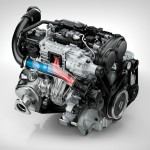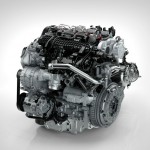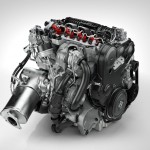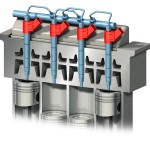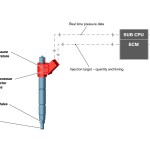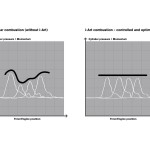The strategy of four-cylinder petrol and diesel engines and driveline electrification is the path that Volvo Cars has chosen for the future.
Volvo Cars’ new Drive-E range of powertrains takes efficient driving pleasure to a new dimension in which the number of cylinders is no longer important to describe power and drivability. The first three engines from the two-litre, four-cylinder Drive-E powertrain family will be launched in autumn 2013. The diesel version features world-first i-Art technology, and the most powerful petrol version comes with a class-leading combination of a compressor and a turbocharger.
The whole Drive-E engine range, which, during the development phase, was called Volvo Engine Architecture (VEA), basically consists of two four-cylinder engines, one common rail diesel and one direct-injected petrol version. They replace eight engine architectures on three platforms.
Drive-E diesels will range from 120 to 230 hp. Petrol versions will start at 140 hp and go all the way up to 300-plus hp.
Several levels of turbo charging open up the flexibility to cover the whole range, from fuel-efficient derivatives through to high power and torque variants. In order to cover all customer requirements, some engines will also gain added performance via electrification or other spearhead technology.
The Drive-E engines are prepared for future electrification from the start. Key components, such as the Integrated Starter Generator, can be connected easily – and the compact size of the four-cylinder engines means that the electric motor can be fitted in the front or rear of the vehicle. The battery pack will be located in the centre of the car.
Three Drive-E engines
Initially, the new S60, V60 and XC60 will be available with three engines from the new engine family: the 306 hp petrol turbo T6, the 245 hp T5 and the turbo diesel D4 with 181 hp. A new 8-speed automatic gearbox contributes to a refined drive and excellent fuel economy. The T5 and the D4 are also available in the new Volvo V70, XC70 and S80.
Volvo Cars’ power train experts have developed the engines in-house. They are being built at Volvo Car Group’s high-tech engine plant in Skövde, Sweden.
New eight-speed automatic gearbox
To deliver the desired responsive, smooth and fuel-efficient drivability, the engines are teamed either with a new eight-speed automatic gearbox or an enhanced six-speed manual, tuned for improved fuel economy.
Source; Volvo Cars

